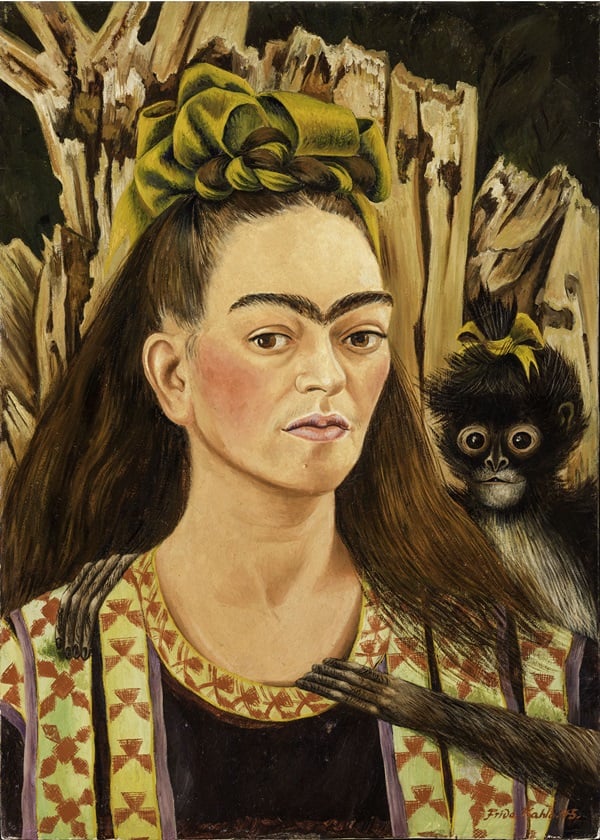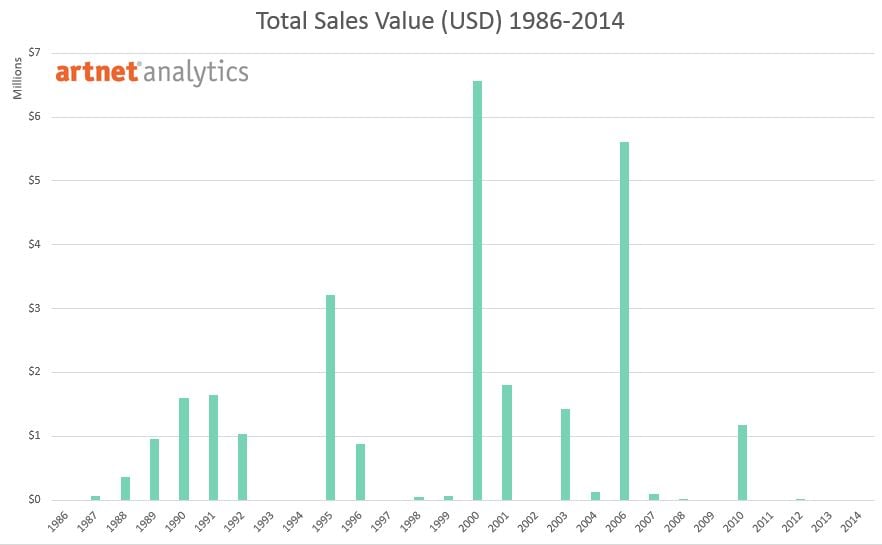
Total auction sales of works by Frida Kahlo at auction 1986-2014.
Source: artnet Analytics
To say that Frida Kahlo is having an art world moment is putting it mildly. The iconic Mexican painter has never been more popular, and a spate of recent and ongoing shows around the world have only further deepened the public’s fascination with her life and work (see 7 Astonishing Facts That Will Change The Way You See Frida Kahlo). Beyond the intense market demand, Kahlo has really acquired a “sort of Pop fascination,” Mary-Anne Martin, a New York art dealer, says. Martin, who founded the Latin American art department at Sotheby’s in the late 1970s has watched the public’s fascination with the artist grow over the past several decades.
Among the most prominent museum shows are the Detroit Institute of Art’s “Diego Rivera and Frida Kahlo in Detroit” which opened March 12 and continues through July 12 (see The Striking Absence in the Detroit Institute of Arts’ Diego Rivera and Frida Kahlo Blockbuster) and the more recently opened “Frida Kahlo: Art, Garden, Life” at the New York Botanical Garden (see Frida Kahlo’s Vision Comes to Life at the New York Botanical Garden), which opened May 16 and runs through November 1 and has already been garnering rave reviews.
This past Thursday (May 21) Throckmorton Fine Art in New York opened “Frida Kahlo: Mirror Mirror,” which explores the many famous photographers who turned their lenses on her over the years (see Frida Fever: Iconic Photos of Frida Kahlo By Edward Weston and Others at Throckmorton).
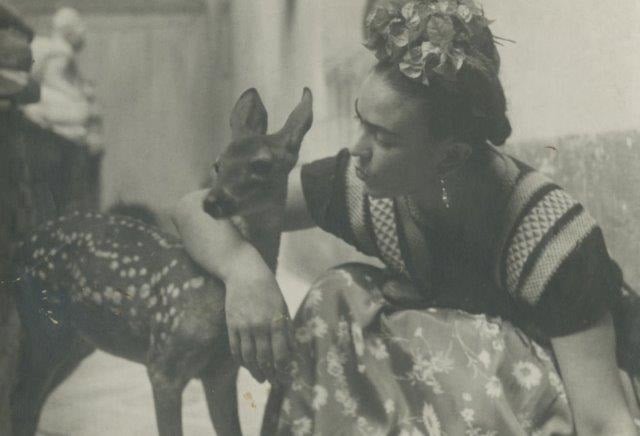
Nikolas Murray Frida with Fawn (1938).
Image: Courtesy of Throckmorton Fine Art, New York.
Given Kahlo’s near mythical status and the surging international interest in and demand for her work, it may come as a surprise to many fans and market observers to learn that only 60 or so of her artworks have come to auction in the past two decades. Of these, just eight have sold for more than $1 million each, and the current record stands at $5.6 million for the 1943 painting Roots, which sold at Sotheby’s New York in 2006. She was the first Latin American artist to break the $1 million mark at auction, in May 1990, when Sotheby’s sold Diego y Yo (1949), for $1.4 million (on an estimate of $800,000 to $1 million).
The problem? A two-fold issue of supply compounded by tight export restrictions dating from the mid-1980s by the Mexican government.
“First of all, Frida was not a prolific artist [and] a number of health issues prevented her from painting more than she wished,” Axel Stein, Sotheby’s senior vice president and head of the department of Latin American art, told artnet News in a phone interview. “Most of the works are in Mexico and laws prohibiting their export have created a very interesting situation in which only paintings that are in the US, that were exported before the 1960s or were painted here in the US—when Frida was traveling with Diego to California, Detroit or Chicago—are available.” Stein says that number represents “not even 10 percent of her output.”
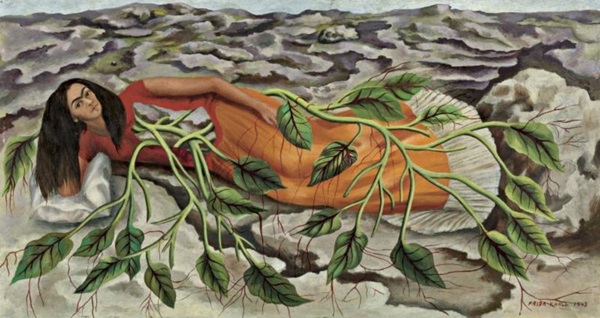
The record for a Frida Kahlo painting at auction is $5.6 million set at Sotheby’s New York in 2006 for Roots (1943).
Photo: Courtesy Sotheby’s.
Data from artnet Analytics shows the artist’s auction volume is extremely erratic. Since at least 1986, the highest number of lots by Kahlo to ever come to auction in a single year was six works in 2000. All sold and brought in a total of $6.6 million. In 2006, the year that the record-setting Roots was sold—coincidentally the only lot that came to auction that year—the total was $5.6 million. However, sources say works have fetched upwards of $10 million on the private market.
Stein says the most desirable Kahlo paintings are those that are emotionally and psychologically charged in nature, particularly those in which the artist depicts herself as an icon of Mexican culture—adorned with necklaces, earrings or hair styles that are typical or representative of the country.
Noting how much demand for her work has soared, Stein says a Kahlo painting that may have sold in the low six figures in the 1990s would now easily bring $6 million to $8 million if available in the US.
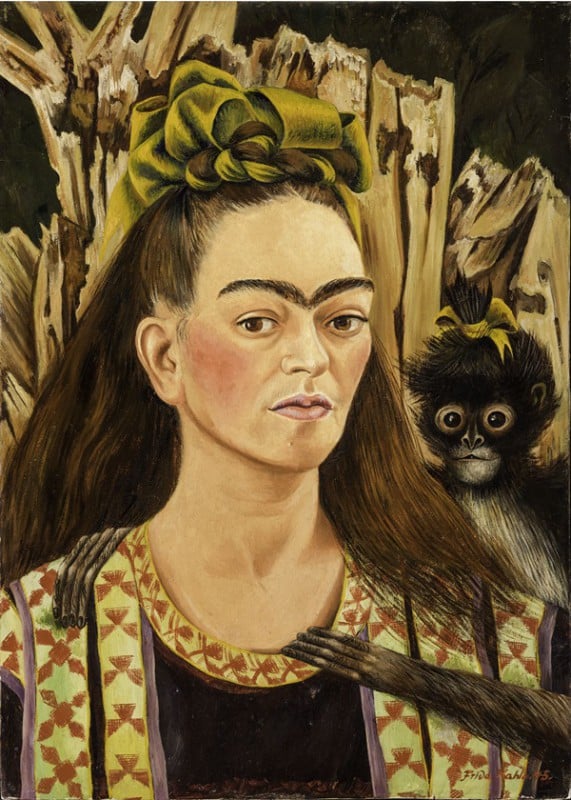
Frida Kahlo, Self Portrait with Monkey (1945) is featured in the current Detroit Institute of Art show.
Robert Brady Museum, photographer: Tachi © 2014 Banco de México Diego Rivera Frida Kahlo Museums Trust, Mexico, D.F. / Artists Rights Society (ARS), New York.
Martin says that in the late 1970s, Kahlo was not yet on the list of artists whose work was affected by Mexico’s patrimony laws. However, after a burst of attention in the early 1980s—including museum shows and a well-received biography by Hayden Herrera—then Mexican president Miguel de la Madrid issued a UNESCO-approved decree. According to the document, “all the works of art produced by the Mexican artist Frida Kahlo Calderon are declared to be artistic monuments, including easel, graphic works, engravings and technical documents, whether property of the nation or private individuals.”
According to Martin, in 1984, Mexico “woke up” to Kahlo’s talent and importance. She says the tight export law “really does have an effect of creating two markets—one outside Mexico and one within.” The same painting that might sell for $500,000 in Mexico could easily double that outside because of international demand.
In some instances, Christie’s and Sotheby’s have even auctioned paintings in New York with the clear stipulation that they cannot be exported from Mexico. So an interested buyer would have to agree to keep the painting within that country, regardless of where he or she resides.
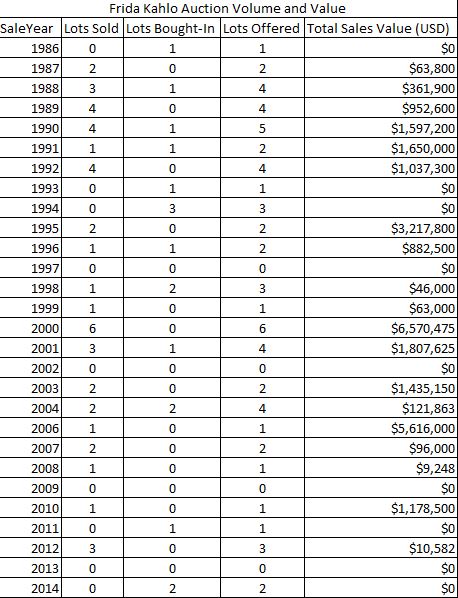
Martin notes that there are two major collections that own numerous important Kahlos, the Mexico-based Delores Olmeda Collection, which frequently lends to major museum exhibitions, and the Jacques and Natasha Gelman collection, which is the basis of a Frida Kahlo and Diego Rivera show running at the NSU Musuem in Fort Lauderdale through the end of May. Martin quips that there are many Kahlo museum shows that could be subtitled “Look How Many Works by Frida Kahlo We Were Able to Get,” noting a Kahlo show in Baden Baden Germany several years ago that consisted entirely of replicas—about 100 in total.
Pop star Madonna’s refusal to lend a Frida Kahlo painting she owns—titled My Birth and created during the artist’s stay in Detroit—to the Detroit show made headlines earlier this year (see Madonna Refused to Lend Her Frida Kahlo Painting to DIA Show).
Martin says that with the lack of major paintings available, “there is nothing to supply the market, ” except lesser-value ephemera like notebooks or personal correspondence (see Frida Kahlo Love Letters Sell for $137,000 and Frida Kahlo Love Letters Go to Auction at Doyle).
She also cautions that the scarcity of paintings “has spawned an incredible number of fakes.” She continued, “I’m sure I see between 50 and 100 fakes every year. I keep track of them in a folder. Some of them are very funny and others are dreadful.”
